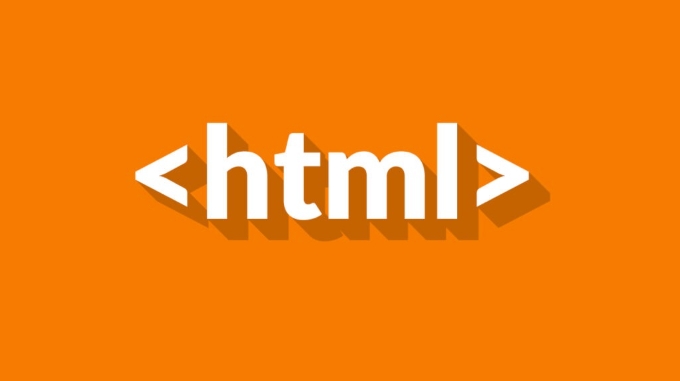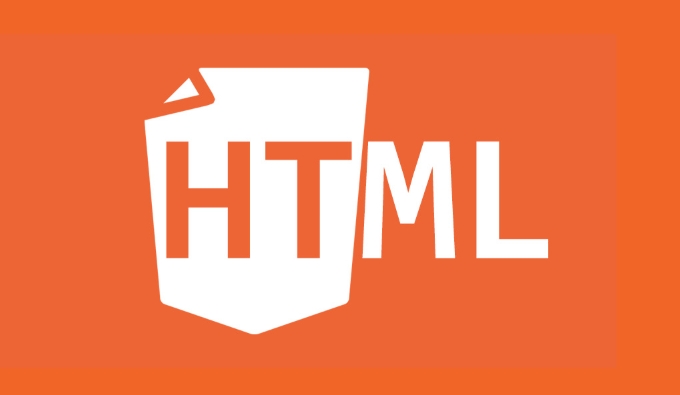There are 8 common input types in HTML forms, which are suitable for different data input requirements. 1. text is used for basic text input; 2. password is used to hide the password input displayed; 3. email is used to enter the email address specifically; 4. number is used for digital input and supports adjustment of numerical values; 5. checkbox is used for multiple selection check boxes; 6. radio is used for radio selection button groups; 7. date provides date selection function; 8. submit is used to submit form data. Each type has its own specific uses and browser support features. Regular use can improve user experience and data processing efficiency.

There are many input types in HTML forms, each type suitable for different data input requirements. Using the right input type can not only improve the user experience, but also help the browser better process input content, such as automatically popping up the appropriate keyboard (such as numeric keyboard, mailbox keyboard, etc.). Here are some common input types and their uses.

1. text : Basic text input
This is the most basic and common type of input, which allows users to enter a normal piece of text, such as name, title, etc.

<input type="text" name="username" placeholder="Please enter username">
- The default width is 20 characters, but it can be adjusted via CSS.
- There is no formatting restriction on the input content, and users can enter any characters.
- It is often used for short text input, and it is recommended to use
<textarea>for long text.
2. password : password input box
This type of input box displays the user input as an asterisk or dot to protect privacy.
<input type="password" name="password" placeholder="Please enter your password">
- The input content will not be displayed explicitly.
- It is usually used with the second input box that confirms the password.
- Note: Although the interface hides content, it is still transmitted plain text when submitting, and requires HTTPS and backend encryption.
3. email : Email address input
This type is specially used to collect users' email addresses, and the browser will perform simple format verification.

<input type="email" name="email" placeholder="your@email.com">
- The browser checks whether the @ symbol and basic format are included.
- The keyboard with the @ key will automatically pop up on the mobile device.
- You can set multiple email addresses to enter:
<input type="email" multiple>
4. number : digital input
Allows users to enter numeric values, and supports up and down arrows to adjust the numeric value size.
<input type="number" name="age" min="0" max="120" step="1">
- The minimum value (min), maximum value (max) and step (step) can be set.
- In browsers that do not support this type, it falls back to
text. - Note: The input is still a string and needs to be converted to numeric values.
5. checkbox : checkbox
Used to let the user select one or more of the options.
<label><input type="checkbox" name="interests" value="sports"> Sports</label> <label><input type="checkbox" name="interests" value="music"> Music</label>
- Each check box exists independently and can be selected at the same time.
- When submitting, only selected items are sent to the server.
- Usually used with
<label>to improve click area and usability.
6. radio : radio button
Used to let the user select only one of multiple options.
<label><input type="radio" name="gender" value="male"> Male</label> <label><input type="radio" name="gender" value="female"> Female</label>
-
nameattributes of the same set of radios must be the same to achieve mutual exclusion. - Users can only choose one of them.
- If there is no default selection, you may need to set the initial state through JavaScript.
7. date : date selector
Allows the user to select a date (year, month, day).
<input type="date" name="birthdate">
- A date selection control is displayed in a browser that supports HTML5.
- The input format is
YYYY-MM-DD. - If the browser does not support it, it will appear as a normal text input box.
Other related types include:
-
time: select time -
datetime-local: Select date and time (excluding time zone) -
month: select year and month -
week: select year and week number
8. submit : Submit button
Used to trigger form submission operation.
<input type="submit" value="submit">
- After clicking, the form data will be sent to the server.
- The text on the button can be customized.
- You can also use
<button type="submit">提交</button>to achieve richer style control.
In addition to these, there are other types such as file (file upload), color (color selector), range (slider), hidden (hidden field), etc. Choosing the appropriate input type according to actual needs can make the form easier to use, safer, and easier to maintain.
Basically these common types are there. After getting familiar with them, you can flexibly deal with various form design scenarios.
The above is the detailed content of What are the different input types in an HTML form. For more information, please follow other related articles on the PHP Chinese website!

Hot AI Tools

Undress AI Tool
Undress images for free

Undresser.AI Undress
AI-powered app for creating realistic nude photos

AI Clothes Remover
Online AI tool for removing clothes from photos.

Clothoff.io
AI clothes remover

Video Face Swap
Swap faces in any video effortlessly with our completely free AI face swap tool!

Hot Article

Hot Tools

Notepad++7.3.1
Easy-to-use and free code editor

SublimeText3 Chinese version
Chinese version, very easy to use

Zend Studio 13.0.1
Powerful PHP integrated development environment

Dreamweaver CS6
Visual web development tools

SublimeText3 Mac version
God-level code editing software (SublimeText3)
 Applying Semantic Structure with article, section, and aside in HTML
Jul 05, 2025 am 02:03 AM
Applying Semantic Structure with article, section, and aside in HTML
Jul 05, 2025 am 02:03 AM
The rational use of semantic tags in HTML can improve page structure clarity, accessibility and SEO effects. 1. Used for independent content blocks, such as blog posts or comments, it must be self-contained; 2. Used for classification related content, usually including titles, and is suitable for different modules of the page; 3. Used for auxiliary information related to the main content but not core, such as sidebar recommendations or author profiles. In actual development, labels should be combined and other, avoid excessive nesting, keep the structure simple, and verify the rationality of the structure through developer tools.
 Implementing Clickable Buttons Using the HTML button Element
Jul 07, 2025 am 02:31 AM
Implementing Clickable Buttons Using the HTML button Element
Jul 07, 2025 am 02:31 AM
To use HTML button elements to achieve clickable buttons, you must first master its basic usage and common precautions. 1. Create buttons with tags and define behaviors through type attributes (such as button, submit, reset), which is submitted by default; 2. Add interactive functions through JavaScript, which can be written inline or bind event listeners through ID to improve maintenance; 3. Use CSS to customize styles, including background color, border, rounded corners and hover/active status effects to enhance user experience; 4. Pay attention to common problems: make sure that the disabled attribute is not enabled, JS events are correctly bound, layout occlusion, and use the help of developer tools to troubleshoot exceptions. Master this
 Configuring Document Metadata Within the HTML head Element
Jul 09, 2025 am 02:30 AM
Configuring Document Metadata Within the HTML head Element
Jul 09, 2025 am 02:30 AM
Metadata in HTMLhead is crucial for SEO, social sharing, and browser behavior. 1. Set the page title and description, use and keep it concise and unique; 2. Add OpenGraph and Twitter card information to optimize social sharing effects, pay attention to the image size and use debugging tools to test; 3. Define the character set and viewport settings to ensure multi-language support is adapted to the mobile terminal; 4. Optional tags such as author copyright, robots control and canonical prevent duplicate content should also be configured reasonably.
 Best HTML tutorial for beginners in 2025
Jul 08, 2025 am 12:25 AM
Best HTML tutorial for beginners in 2025
Jul 08, 2025 am 12:25 AM
TolearnHTMLin2025,chooseatutorialthatbalanceshands-onpracticewithmodernstandardsandintegratesCSSandJavaScriptbasics.1.Prioritizehands-onlearningwithstep-by-stepprojectslikebuildingapersonalprofileorbloglayout.2.EnsureitcoversmodernHTMLelementssuchas,
 HTML for email templates tutorial
Jul 10, 2025 pm 02:01 PM
HTML for email templates tutorial
Jul 10, 2025 pm 02:01 PM
How to make HTML mail templates with good compatibility? First, you need to build a structure with tables to avoid using div flex or grid layout; secondly, all styles must be inlined and cannot rely on external CSS; then the picture should be added with alt description and use a public URL, and the buttons should be simulated with a table or td with background color; finally, you must test and adjust the details on multiple clients.
 How to associate captions with images or media using the html figure and figcaption elements?
Jul 07, 2025 am 02:30 AM
How to associate captions with images or media using the html figure and figcaption elements?
Jul 07, 2025 am 02:30 AM
Using HTML sums allows for intuitive and semantic clarity to add caption text to images or media. 1. Used to wrap independent media content, such as pictures, videos or code blocks; 2. It is placed as its explanatory text, and can be located above or below the media; 3. They not only improve the clarity of the page structure, but also enhance accessibility and SEO effect; 4. When using it, you should pay attention to avoid abuse, and apply to content that needs to be emphasized and accompanied by description, rather than ordinary decorative pictures; 5. The alt attribute that cannot be ignored, which is different from figcaption; 6. The figcaption is flexible and can be placed at the top or bottom of the figure as needed. Using these two tags correctly helps to build semantic and easy to understand web content.
 What are the most commonly used global attributes in html?
Jul 10, 2025 am 10:58 AM
What are the most commonly used global attributes in html?
Jul 10, 2025 am 10:58 AM
class, id, style, data-, and title are the most commonly used global attributes in HTML. class is used to specify one or more class names to facilitate style setting and JavaScript operations; id provides unique identifiers for elements, suitable for anchor jumps and JavaScript control; style allows for inline styles to be added, suitable for temporary debugging but not recommended for large-scale use; data-properties are used to store custom data, which is convenient for front-end and back-end interaction; title is used to add mouseover prompts, but its style and behavior are limited by the browser. Reasonable selection of these attributes can improve development efficiency and user experience.
 How to handle forms submission in HTML without a server?
Jul 09, 2025 am 01:14 AM
How to handle forms submission in HTML without a server?
Jul 09, 2025 am 01:14 AM
When there is no backend server, HTML form submission can still be processed through front-end technology or third-party services. Specific methods include: 1. Use JavaScript to intercept form submissions to achieve input verification and user feedback, but the data will not be persisted; 2. Use third-party serverless form services such as Formspree to collect data and provide email notification and redirection functions; 3. Use localStorage to store temporary client data, which is suitable for saving user preferences or managing single-page application status, but is not suitable for long-term storage of sensitive information.






